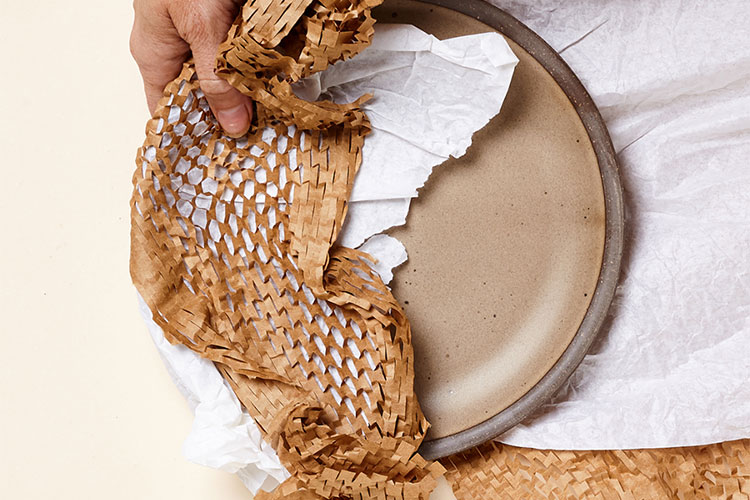Product returns are a significant challenge for many businesses, especially during the busy holiday season. Returns don’t just eat into profit margins—they can also negatively impact a brand’s reputation and lead to customer dissatisfaction. One of the most effective ways to reduce product returns is by focusing on packaging. Proper packaging can safeguard your products, enhance the customer experience, and ultimately lower the rate of costly returns. Here’s how smart packaging strategies can make a big difference.
8 Ways Packaging Can Reduce Product Returns
1. Choose the Right Packaging Materials
The foundation of protective packaging is selecting the appropriate materials. Different products have different requirements:
- Fragile Items like electronics or glassware need robust cushioning, such as bubble wrap, foam inserts, or air pillows.
- Heavy Items require sturdy corrugated boxes that can handle the weight without buckling.
- Moisture-Sensitive Products benefit from water-resistant materials or vacuum-sealed packaging.
By choosing the correct material for your product, you minimize the risk of damage during shipping and handling, leading to fewer returns.
2. Secure Products with Protective Inner Packaging
Even if the outer packaging is strong, products can still shift or get damaged inside the box. Using appropriate inner packaging is crucial:
- Dividers and partitions are great for separating multiple items in a box.
- Molded inserts can be custom-designed to fit the product’s exact dimensions, preventing movement.
- Shock-absorbing materials like foam or void fill protect products from impact.
Adding an extra layer of internal protection helps ensure the product arrives exactly as intended.
3. Test Packaging for Durability
Testing your packaging before rolling it out is an essential step. Simulating real-world shipping scenarios can help identify weak points:
- Drop tests to see how well the packaging protects from falls.
- Compression tests to ensure the box can withstand stacking during shipping.
- Vibration tests to check for potential damage during long-haul transportation.
Regularly testing and iterating your packaging can catch potential issues early, leading to fewer damaged goods and returns.
4. Use Clear and Informative Labels
Clear labeling can also play a significant role in reducing returns:
- Fragile labels alert carriers to handle packages with care.
- “This Side Up” labels help ensure the box is properly oriented during transportation.
Proper labeling can help to reduce the chances of mishandling packages by both the carrier and consumer.
5. Consider the Unboxing Experience
A positive unboxing experience not only delights customers but can also reduce returns. Here’s how:
- Secure packaging keeps items in perfect condition, avoiding the disappointment of receiving damaged goods.
- Easy-to-open packages reduce frustration and minimize the risk of customers damaging the product themselves.
- Include clear instructions and user guides to help customers understand how to use the product, avoiding confusion that could lead to returns.
A thoughtful unboxing experience fosters customer trust and satisfaction, making them less likely to return items.
6. Use Tamper-Evident and Return-Friendly Packaging
Tamper-evident packaging can increase consumer confidence, while return-friendly packaging can make the return process smoother, should it be necessary:
- Tamper-evident seals reassure customers that the product hasn’t been tampered with.
- Easy-return packaging can facilitate the return process without requiring extra effort. Self-sealing pouches, resealable bags, or dual adhesive strips make it simple for customers to return an item if they must.
Offering return-friendly packaging shows a commitment to customer satisfaction, but investing in tamper-evident features can significantly reduce fraudulent returns.
7. Train Your Team on Proper Packing Techniques
Even with the best materials, improper packing techniques can still lead to damage. Training your team is key:
- Ensure they understand how to securely wrap and protect different types of items.
- Teach them the importance of using the right size box to avoid excess movement.
- Encourage careful inspection of packaging materials for defects before packing.
A well-trained team ensures a consistent and high standard of packaging, reducing the chances of product damage.
8. Monitor and Analyze Return Data
Finally, to continuously improve, analyze your return data:
- Identify patterns—are certain products returned more often due to damage?
- Look at customer feedback to understand if packaging is a common issue.
- Adjust packaging strategies based on real data, making data-driven improvements.
Tracking this information helps you refine your packaging approach, reducing future returns and improving customer satisfaction.
Conclusion
Reducing product returns starts with proper packaging. By investing in the right materials, securing your products with protective inner packaging, and creating a great unboxing experience, you not only cut down on the cost of returns but also enhance customer loyalty. Remember, good packaging isn’t just about getting the product to the customer—it’s about ensuring it arrives in perfect condition, every time.
By focusing on packaging, you can save on costs, reduce waste, and build a stronger, more trusted brand. Ready to improve your packaging? Request a FREE packaging audit from a Flexpak Packaging Consultant today!




